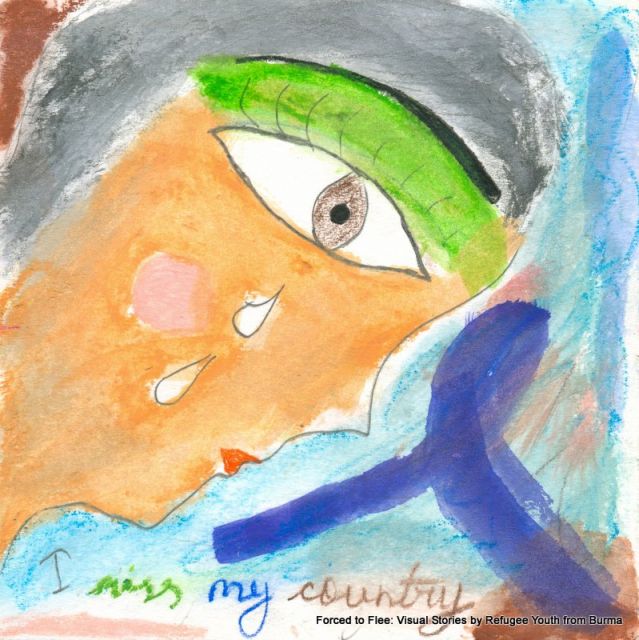Trauma
Children’s Art as Visual Narrative
Children show us their suffering and their hopes through art.
Posted October 31, 2014

Words tell our stories, but art makes it possible for us to bear witness to them. While I believe this is true for individuals of all ages, it is particularly so for children. For many youth, art is a vehicle for exposing the atrocities of interpersonal violence, oppression, genocide, and it is a way of “breaking the silence” through the visual narrative of art expression.
In times of trauma, children relive events not only in their minds, but also through their actions. In part, their actions are often attempts to regain mastery over the events that have disrupted their lives. Expressive arts, play and imagination are some of the ways that children can express the unspeakable and circumvent “talking about it” when it is too difficult to put into words or language is temporarily unavailable because of crisis.
We now know that non-verbal expressive arts like simple drawing, painting and constructing are effective restorative experiences. Language, a function of declarative memory, is often inaccessible to trauma survivors of any age if the event has been particularly disturbing. Broca’s area, a section of the brain that controls language is affected, making it difficult to tell the trauma narrative. In fact, when a trauma survivor tries to speak about the incident, in many cases PET scans show that Broca’s area tends to shut down.
Not so long ago helping professionals were taught that it was better to help a survivor forget than remember traumatic events. I can remember in my earliest years as a practitioner attending seminars that claimed that children who witnessed violence would eventually stop thinking about their nightmarish memories and “get over it.” Fortunately, we now know the importance of acknowledging, validating, and, when needed, providing mental health intervention to help the smallest witnesses tell their stories. Creative acts, as simple as drawings and imaginative play, give young survivors a voice when silence is self-imposed or imposed by others.
A compelling example of visual narrative is being documented through the project Forced to Flee: Visual Stories of Refugee Youth from Burma.”** It is the focus of a Kickstarter project that is compiling a book of art expressions by these young people who have had to flee their homes, experience human trafficking, find refuge and live in exile; at the same time, their art expressions also convey their resilience, hopes and visions for peace. According to the project creator Erika Berg, Forced to Flee “ illustrates that the emotions conveyed and evoked by a single narrative image can tell a story of a thousand words, open hearts and build bridges of understanding…refugee youth harness the power of narrative art to personalize human rights issues and promote a just and inclusive peace in Burma.”

While this project’s intention to call upon all of us to mobilize needed peace building efforts in Burma, I believe it does something equally important. It honors the visual narratives of youth, tells their stories of injustice and atrocity, and offers us a window into possibilities for reparation and redemption for these young survivors. Most of all, it reminds us how children’s art provides a compelling, personal and often profound worldview their life experiences as well as another way of knowing their truths.
Keep calm and tell your truths through creative expression,
Cathy Malchiodi, PhD
© 2014 Cathy A. Malchiodi
**For more information on Forced to Flee and its Kickstarter campaign, please visit https://www.kickstarter.com/projects/433142527/forced-to-flee-visual-stories-by-refugee-youth-fro
From "Arts and Health" Archives on Psychology Today, please visit these related posts:
Part I of “When Trauma Happens, Children Draw” describes how trauma affects mind and body and why creative expression may be an important piece in trauma intervention with children, including the treatment of posttraumatic stress disorder..
Part II tells the powerful story of Human Rights Watch peace campaigners whose humanitarian trip to Darfur and demonstrates how simple crayons and paper became vehicles for communicating life’s most devastating atrocities.
Part III addresses why children need to find an internal sense of safety through creative, developmentally appropriate activities like art and play.
Visit my website at www.cathymalchiodi.com for more information on art therapy and creative arts therapies.
For more information on Trauma-Informed Art Therapy and Trauma-Informed Expressive Arts Therapy, visit the Trauma-Informed Practices and Expressive Arts Therapy Institute at www.trauma-informedpractice.com.


